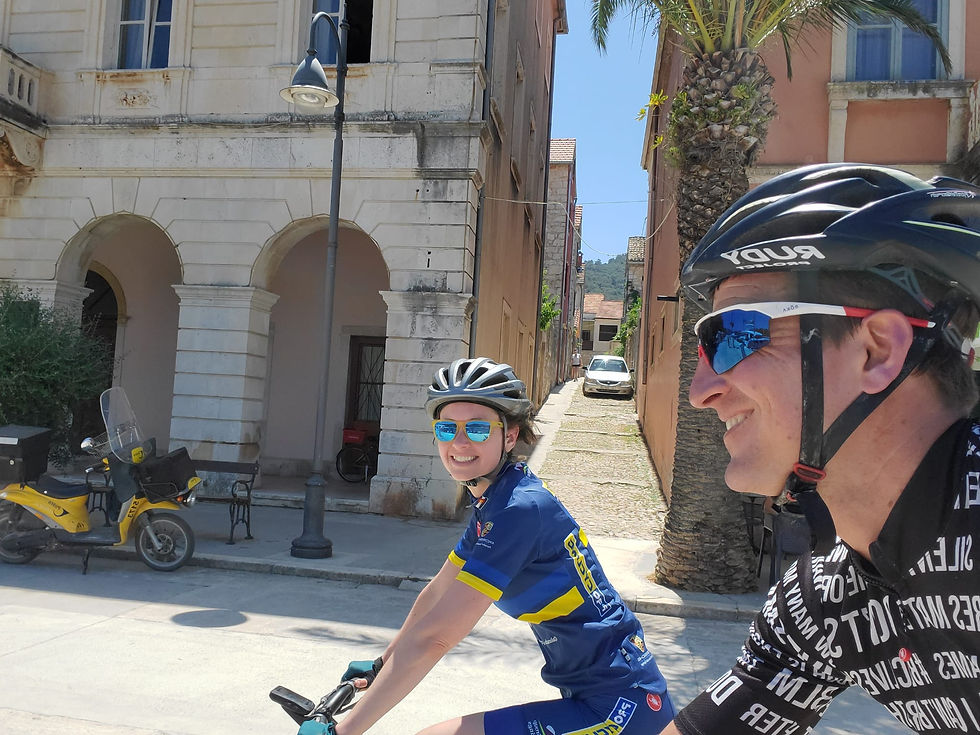By Briana Rickertsen

When I imagined my first wedding anniversary, I envisioned drinking bubbly while exploring a fun mountain town. While I ended up enjoying that bubbly, I could never have imagined it would be at the end of my first chemo cycle – during a staycation filled with hand sanitizer, face masks, and social distancing.
Let’s back it up to May 2020. It was about six weeks into the COVID-19 pandemic. I noticed that my breast tissue felt off. I couldn’t find a lump, but I found myself thinking that my right side felt different than my left. I noticed a drop of blood on a white t-shirt and realized it came from my nipple. And yes, I googled what this could be.
After a telehealth appointment, diagnostic mammogram, ultrasound, and biopsy, I found out that what I had found in my google search was true. I was diagnosed with invasive ductal carcinoma on July 1, 2020 at the age of 35. The next four weeks were a whirlwind of daily appointments to prepare for chemotherapy, a failed attempt at fertility preservation, and the discovery that I had a BRCA2 mutation – all while learning this new medical language.
While my cancer was aggressive, so was the treatment. I began 20 weeks of chemotherapy (Adriamycin and Cytoxan followed by Taxol) at the end of July. I knew from the day of my diagnosis that I would have chemo, followed by surgery and then likely radiation. Finding out I had a BRCA2 mutation was a shock, but ultimately this helped to make necessary decisions about surgery options and future treatment approaches. I decided to have a bilateral mastectomy after chemo, and a preventative oophorectomy later that year.

I was coming out of the rough days of my first chemo cycle when my first wedding anniversary arrived. I had started to pick up energy, and I was able to thoroughly enjoy the surprise staycation my husband planned. While our wedding vows had talked more about adventuring and not saying no to making additional bike purchases, he didn’t need a more traditional vow of sickness or health to be with me every step of the way.
Sometimes I feel as though getting diagnosed with cancer during the height of the pandemic would be my first choice if I had to choose when to get diagnosed with a horrible disease. I also have a relatively dark sense of humor; this discussion has not always landed well when I joke about it. For the most part, everyone was under similar considerations and restrictions, and I wasn’t missing out on international travel (a passion of mine).
At the beginning of the pandemic, my husband set my bike up on a trainer and I joined the Peloton app. I was able to ride with my friends before work and it was a wonderful way to move and stay connected during a really unexpected and physically isolating time. By the time I noticed my breast symptoms in May 2020, I was using the Peloton app every day. I enjoyed the variety and the ability to take even 10 minutes a day for myself.
When I was diagnosed, I made a commitment to myself to keep up my exercise streak. I rode, walked, practiced yoga and strength, and meditated throughout 16 chemo cycles, five surgeries (port placement, double mastectomy, axillary node dissection, bilateral salpingo-oophorectomy, and implant exchange), five weeks of radiation, and one year of targeted treatment (PHESGO) after my surprise HER2 finding post chemo and surgery. I finished active treatment in January 2022 and as of October 2023, I have continued to use the app or bike in some way every day. While you absolutely do not need the specific branded bike or treadmill to maintain an exercise routine, during radiation I decided after 300 rides on a trainer it was time for an actual Peloton bike.
Now that some time has passed since the more intense treatment, I have turned more of my time and energy to help fellow survivors reach exercise and movement recommendations through the Instagram account The Nifty 150. My “think big” goals include being able to have free Peloton app access during treatment for cancer survivors, targeted programming, education, and Peloton equipment in cancer centers (and free rentals for those in rural areas). Exercise and movement were a big part of both my cancer and my pandemic experience. As I continue to learn more every day about the benefits of exercise during and after treatment, I want to advocate for greater accessibility for survivors.
I’m grateful to have now celebrated more anniversaries over the last three years. I appreciate the ability to continue to move my body and can’t wait to see where we can go.

Connect with Bri:
Read More:
On the Podcast: Breast Cancer Conversations
Is it Safe to Exercise After Being Diagnosed with Breast Cancer?
Submit Your Story:











